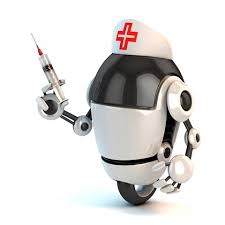
Breaking News
 How To Become Competent, Confident, and Dangerous, with guest Doug Casey
How To Become Competent, Confident, and Dangerous, with guest Doug Casey
 My Hot Take On Bill Gates' Climate Change Essay | Alex Epstein #457 | The Way I Heard It
My Hot Take On Bill Gates' Climate Change Essay | Alex Epstein #457 | The Way I Heard It
 Discussion on Covid Vaccination Should Be Non-Controversial
Discussion on Covid Vaccination Should Be Non-Controversial
Top Tech News
 HUGE 32kWh LiFePO4 DIY Battery w/ 628Ah Cells! 90 Minute Build
HUGE 32kWh LiFePO4 DIY Battery w/ 628Ah Cells! 90 Minute Build
 What Has Bitcoin Become 17 Years After Satoshi Nakamoto Published The Whitepaper?
What Has Bitcoin Become 17 Years After Satoshi Nakamoto Published The Whitepaper?
 Japan just injected artificial blood into a human. No blood type needed. No refrigeration.
Japan just injected artificial blood into a human. No blood type needed. No refrigeration.
 The 6 Best LLM Tools To Run Models Locally
The 6 Best LLM Tools To Run Models Locally
 Testing My First Sodium-Ion Solar Battery
Testing My First Sodium-Ion Solar Battery
 A man once paralyzed from the waist down now stands on his own, not with machines or wires,...
A man once paralyzed from the waist down now stands on his own, not with machines or wires,...
 Review: Thumb-sized thermal camera turns your phone into a smart tool
Review: Thumb-sized thermal camera turns your phone into a smart tool
 Army To Bring Nuclear Microreactors To Its Bases By 2028
Army To Bring Nuclear Microreactors To Its Bases By 2028
 Nissan Says It's On Track For Solid-State Batteries That Double EV Range By 2028
Nissan Says It's On Track For Solid-State Batteries That Double EV Range By 2028
Robots are coming to a hospital near you

Medical robots are helping doctors and other professionals save time, lower costs and shorten patient recovery times, but patients may not be ready. Our research into human perceptions of automated healthcare finds that people are wary of getting their healthcare from an automated system but that they can adjust to the idea—especially if it saves them money.
Hospitals and medical practices are already using a fair amount of automation. For instance, in one San Francisco hospital and other places, delivery robots–about the size of a mini-fridge–zip through the hallways delivering pills, bringing lunch to patients, and ferrying specimens and medical equipment to different labs. Some hospitals are set up for delivery robots to open remote-control doors and even use elevators to get around the building.
Robots can also assist with more complex tasks, like surgery. Their participation can range from simply helping stabilize a surgeon's toolsall the way to autonomously performing the entire procedure. Perhaps the most famous robotic surgery system lets a surgeon operate full-size, ergonomically friendly equipment as a remote control to direct extremely tiny instruments what to do inside a patient's body, often through extremely small incisions.

 Dark Tidings
Dark Tidings Carbon based computers that run on iron
Carbon based computers that run on iron

